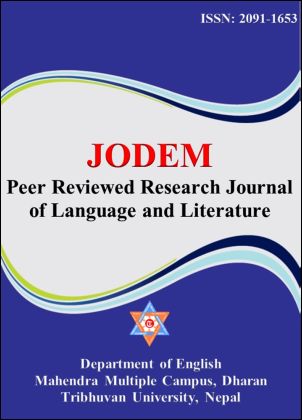A Comparative Study of Ghā̃tu Performance and Balan Dance
DOI:
https://doi.org/10.3126/jodem.v13i1.47468Keywords:
Balan, Ghā̃tu performance, performing art, vyasAbstract
The study employs the performance theory to analyze Ghā̃tu performance and Balan dance. They are popular cultural activities because of the beauty of artistic presentations with historical values. This bond symbolizes the harmonious relations of human beings. The network of dance masters, dancers, and audiences plays a vital role in performance. They are bound in such a way that they cannot get separated. Because of such cultural activities, man-to-man relations become strong in village life compared to urban life. After the dance masters begin to sing, the dancers begin dancing in full accordance with the words and tunes. As a result, audiences also perform the same indirectly. The performance audience is much more worth having than the performance of the two. In the performance, all the audiences get connected unknowingly. Physically, only the dance master and dancer perform but mentally, the audiences also perform at the same rate. Performance theory calls this kinesthetic impact, and kinesthetic impact is such an impact that moves the audience. It is not only the singer singing the song and the dancer dancing, it is the audiences who are singing and dancing simultaneously. Thus, this paper focuses on Ghā̃tu and Balan in the context of human identities, although a few researchers have worked on this site. The dancing art of Ghā̃tu and Balan is very peculiar and incomparable to hundreds of other dance performances. So, the performativity of both dances surprises the audience.
Downloads
Downloads
Published
How to Cite
Issue
Section
License
© Department of English, Mahendra Multiple Campus, Dharan, Nepal

